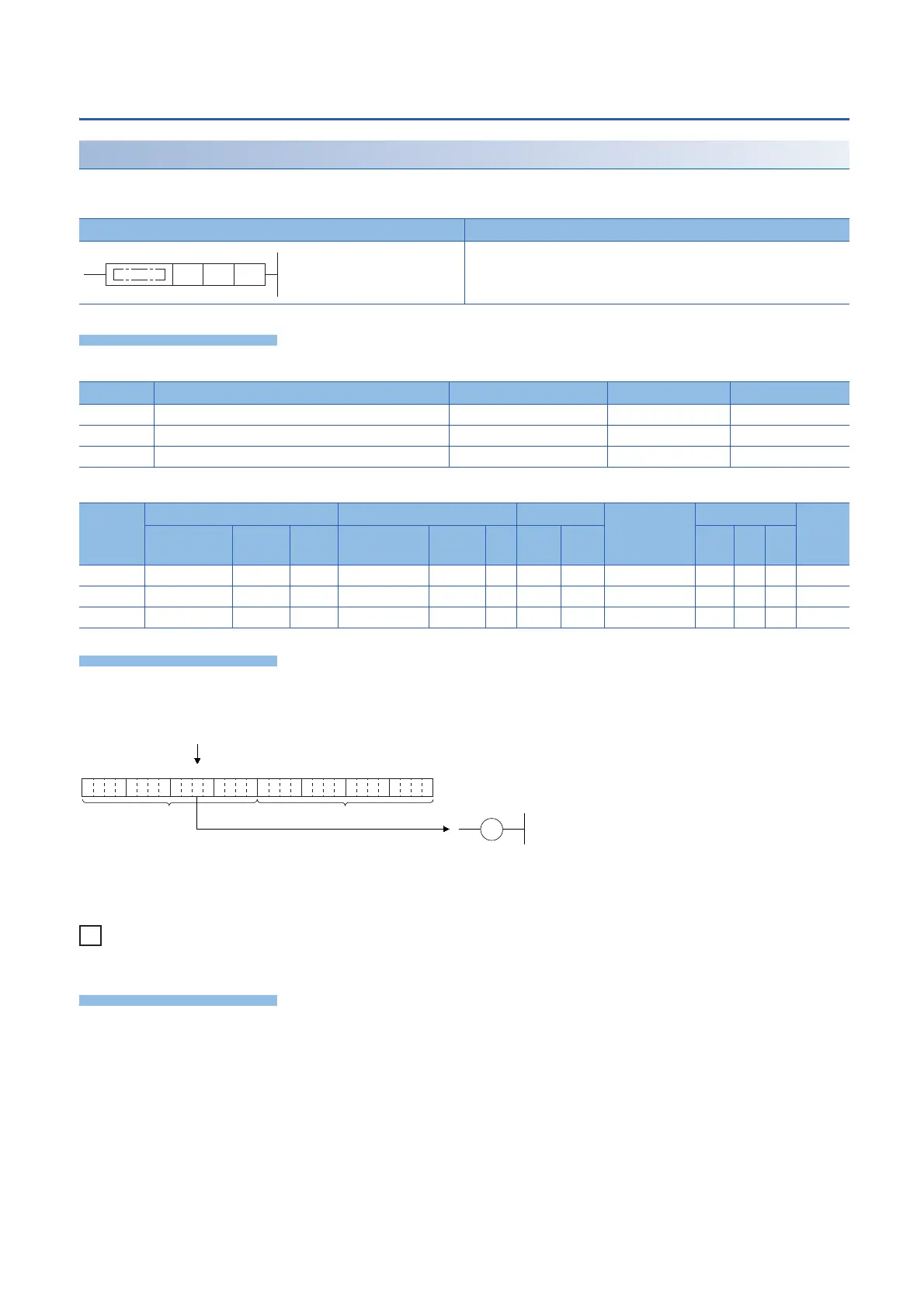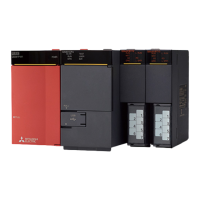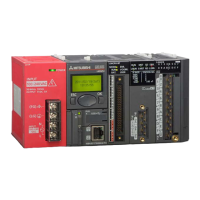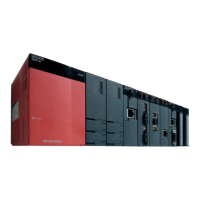238
6 BASIC INSTRUCTIONS
6.4 Bit Processing Instructions
Performing a 32-bit test
DTEST(P)
These instructions take bit data at position specified by (s2) from device specified by (s1) and write to bit device specified by
(d).
■Descriptions, ranges, and data types
■Applicable devices
• These instructions take bit data at position specified by (s2) from device specified by (s1), (s1) +1 and write to bit device
specified by (d).
• If relevant bit is "0", device specified by (d) is turned OFF, and if it is "1", device is turned ON.
• For (s2) specify the bit position (0 to 31) of double word data. If 32 or more is specified for (s2), the value of the remainder
of (s2)32 is the bit position.
For (s2) = 34, the remainder for 3432 is "2", so it becomes data of b2.
There is no operation error.
Ladder diagram Structured text
ENO:=DTEST(EN,s1,s2,d);
ENO:=DTESTP(EN,s1,s2,d);
Operand Description Range Data type Data type (label)
(s1) Device number where bit data to be extracted is stored 32-bit signed binary ANY32
(s2) Position of bit data to be extracted 0 to 31 16-bit unsigned binary ANY16
(d) Bit device number where extracted bit data is to be stored Bit ANY_BOOL
Operand Bit Word Double word Indirect
specification
Constant Others
X, Y, M, L,
SM, F, B, SB
U\G T, ST,
C, LC
T, ST, C, D,
W, SD, SW, R
U\G Z LC LZ K, H E $
(s1)
(s2)
(d)
··· ··· ···b31 b15b16 b0
(d)
(s1)
b21
(s1)+1
(s2) bit (When (s2)=21)

